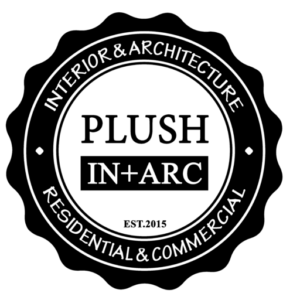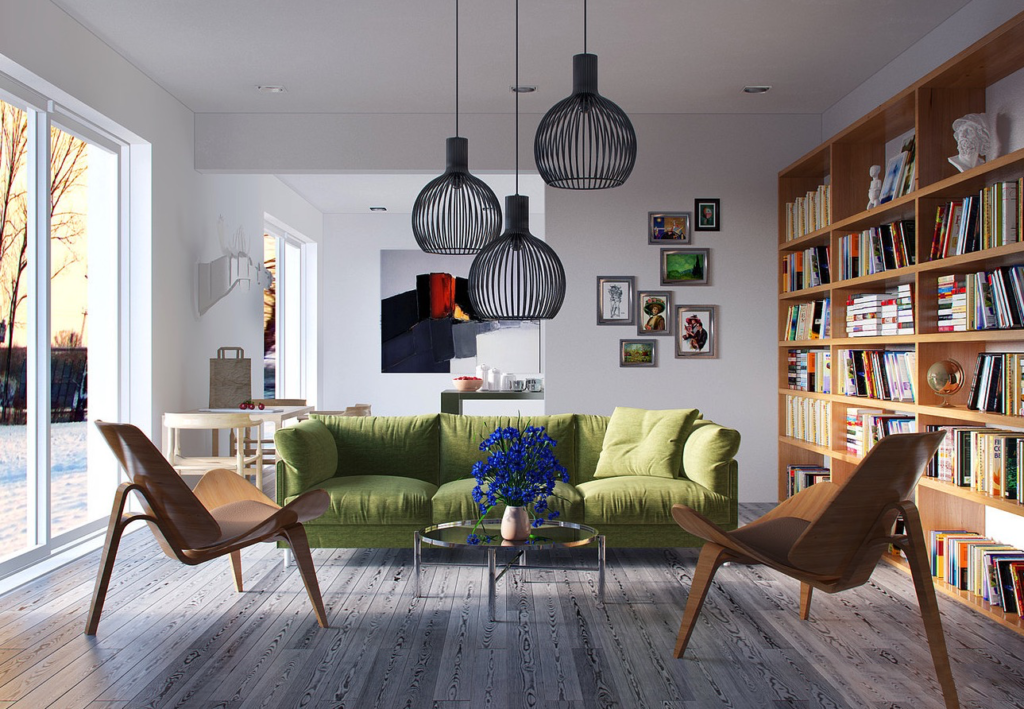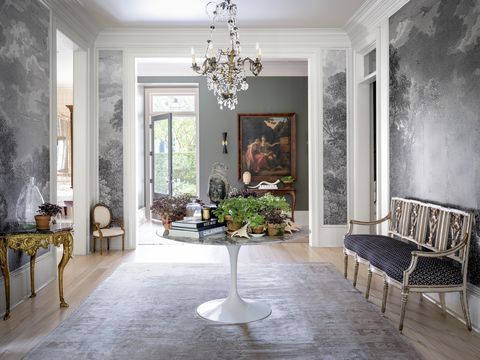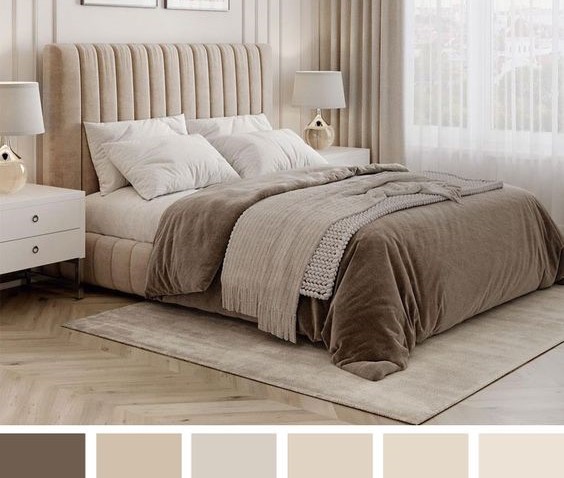The world of interior design has evolved rapidly over the past decade, with the advent of new technologies that have revolutionized the way we design and decorate our homes. One of the most significant developments in this area has been the rise of smart home systems and automation, which are transforming the way we interact with our living spaces.
SMART TECHNOLOGY IN INTERIOR DESIGN
Gadgets and gizmos have taken over the world and today, every home is incomplete without interior tech elements. As homeowners march into the future, they become more conscious about their interior spaces. People want sustainable and smart homes and to build these, we need technologically advanced and proficient interior designers.
Smart technology and the use of tools are the need of the hour as interior designers, builders and real estate moguls focus on creating homes for a better tomorrow. There was a time when adopting and integrating technology in interior design was expensive. Today, interior designers find ways to use smart technologies and incorporate them seamlessly into one’s home.
Let’s take a look at the top technological advancements in interior design, which have completely shifted the way the industry works.
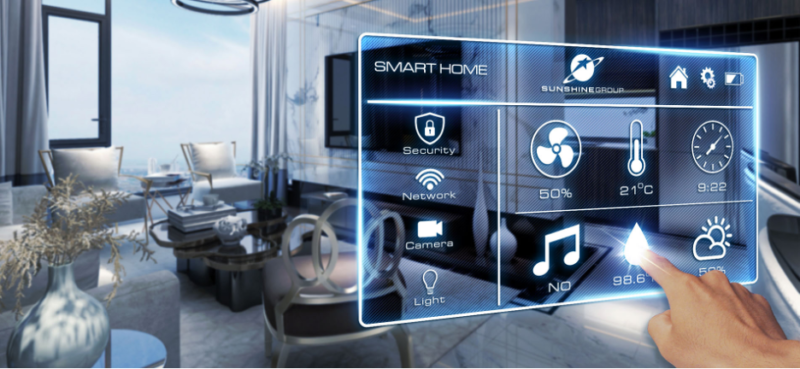
MORE INNOVATIVE OPTIONS FOR HOME AUTOMATION
Even homes with the most classic or rustic decor, such as those that have incorporated country furnishings and more, can enhance their design scheme with modern home automation technology. While it is most common to find automation features that give you the ability to control everything from the intensity of the light in the room to the temperature and even the entertainment features, there are additional options available with some of the more advanced systems. While you want your home to look wonderful, you want to feel calm and comfortable at home. With the integration of home automation technology into your home design plan, you can easily take your living experience to the next level.
UNDERSTANDING HOW HOME AUTOMATION WORKS
Before one can fully understand how to implement home automation into your interior design plan, it is important to learn about modern automation options. Today’s home automation systems give you the ability to control almost every component of ambiance with ease. For example, home automation may include controls for lighting, climate control, music, the blinds or drapes, music and the television entertainment system. There are different types of systems available, but most of these systems currently give the homeowner the ability to adjust these features through their smartphone, a tablet or another similar device.
All controls are easy to locate and adjust as needed so that the ideal ambiance can be created in the space with minimal time and effort. This means that you can make adjustments while standing in the room or even from outside the home.
SMART INTERIOR SOLUTIONS
A connected house that lets you control lights, blinds, etc. is not the same as a house that has the capability to make decisions based on the inhabitants’ preferences and their habits. The main characteristics of a smart home are sensorization, connectivity and the interoperability of elements in the home.
TYPES OF SMART TECHNOLOGIES FOR INTERIOR DESIGN
- SMART DESIGNS
- SMART KITCHENS
- SMART ENTERTAINMENT
- SMART LIGHTING
- SMART SWITCHES
- SMART LIVING SPACES
- SMART SECURITY SYSTEMS
- SMART HEADING & COOLING SYSTEMS
- SMART SENSORS
- SMART PRIVACY
Let’s take a look at the top 10 ways smart technologies can be used in interior design.
1. SMART DESIGNS
A marvelous tool of an interior designer is the ability to use the internet to create designs for their clients. Designers can create smart designs using a variety of technology—AR & VR technology, use virtual staging platforms to showcase designs to their clients, and even 3D modeling and 3D printing tools such as the ones available. These tools help designers to collaborate easily with their clients while cutting down on physical visits and the overall cost of designing the interior space.
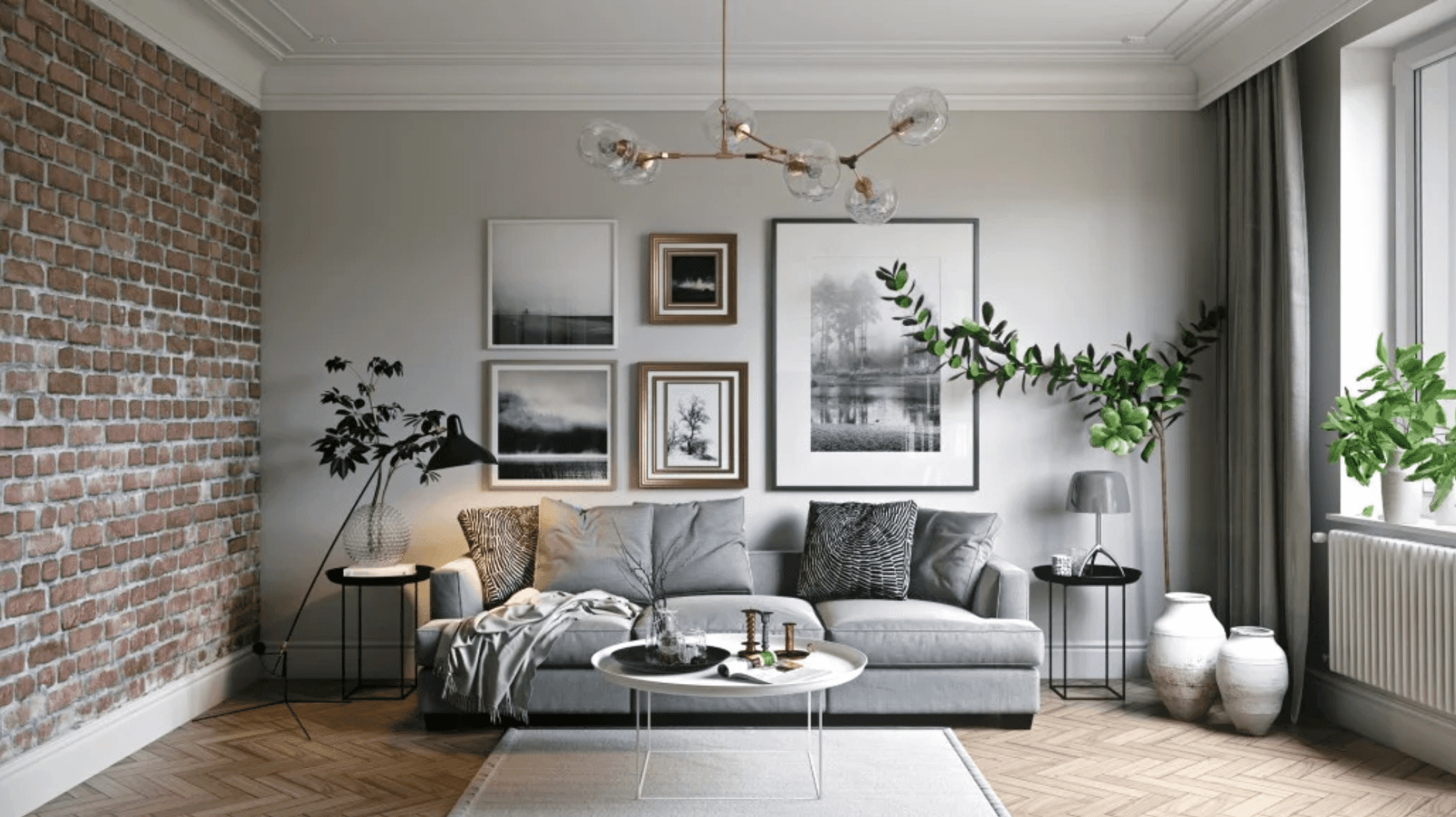
2. SMART KITCHENS
Ever since the internet of things has become a phenomenon, so have improvements in the overall interior design industry. Ever been impressed by a smart kitchen that communicates with the user? Smart and modular kitchens are typically in-built with a host of technological integrations, which include the ability to follow instructions, adjust lighting, and even set the temperature.
Interior designers use modern technology in the form of smart refrigerators, voice-controlled equipment like ovens and dishwashers and other smart appliances. Imagine being able to set the oven’s temperature from an app, even when you’re not at home, so you can get started on your dinner early!

3. SMART ENTERTAINMENT
When you think about home automation, you can’t leave entertainment behind. These days, most people use voice-controlled devices like Google Home or Alexa to control the entertainment in their homes. Interior designers hook these systems up to a home’s entertainment unit – the TV, speakers or sound systems.
All you need to do is provide the commands to play music, movies, videos and more. Based on the client’s requirement, interior designers have the option to integrate smart entertainment systems into a home to keep all the members of the house easily engrossed. Smart home devices like smart speakers make a great addition to the home’s value.

4. SMART LIGHTING
Interior designers use smart lighting to automate lights inside a home. Smart lighting eliminates the need for traditional switches and they can be controlled remotely. Smart lighting brings down the overall cost of energy used by a home—you don’t need to keep replacing light bulbs in your home.
In fact, smart lighting systems also tend to last for a longer duration of time than traditional lighting systems and don’t need to be replaced that often. Smart lighting can be customized for festivities, holidays, and even regular days. With lighting control, you can give your client’s home a smart home design they’d love coming home to.
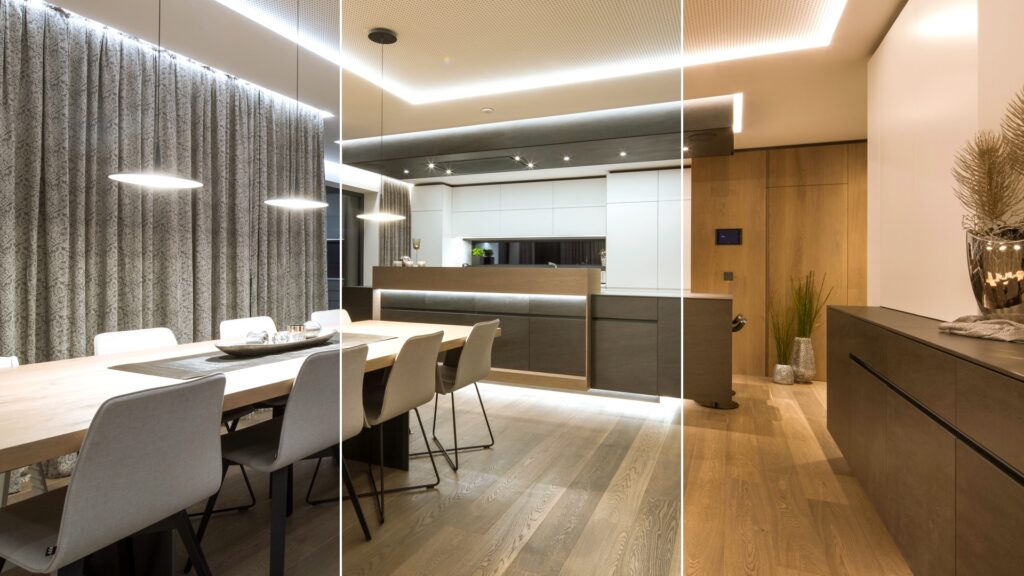
5. SMART SWITCHES
As an interior designer, the main objective is to create an affordable home that exudes a feeling of luxury. Another great way to make the overall cost of the home affordable is to install smart switches. This is even helpful for designers undertaking a renovation project.
Instead of upgrading appliances inside the home or the kitchen, one can simply install smart switches which are controlled by a single remote or smartphone, over the WiFi. The controls of a smart switch can be extended to the home’s lighting, fans, and even entertainment system, and over time, it helps the home become more energy and cost-efficient.
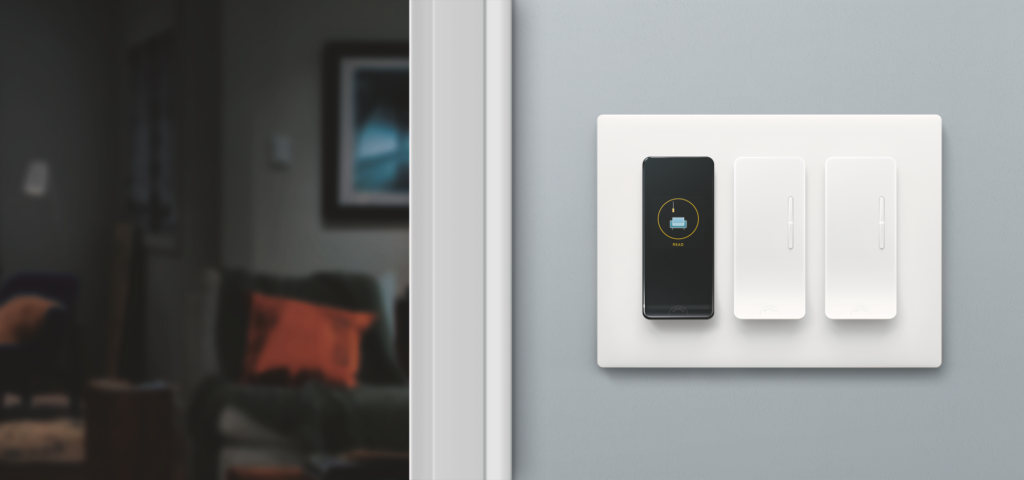
6. SMART LIVING SPACES
Living spaces such as the living room, study, or bedroom can be converted into smart areas of the home by simply installing intelligent lighting systems and smart switches. As an interior designer, if you are looking for inspiration to upgrade a home’s interiors, turn to audio-visual design.
AV designs include installing built-in entertainment units and screens and projectors. Many designers even use storage more optimally by building closets and shelves into the walls. This allows for better aesthetics, storage, as well as leaves homeowners with a state-of-the-art modern living space.
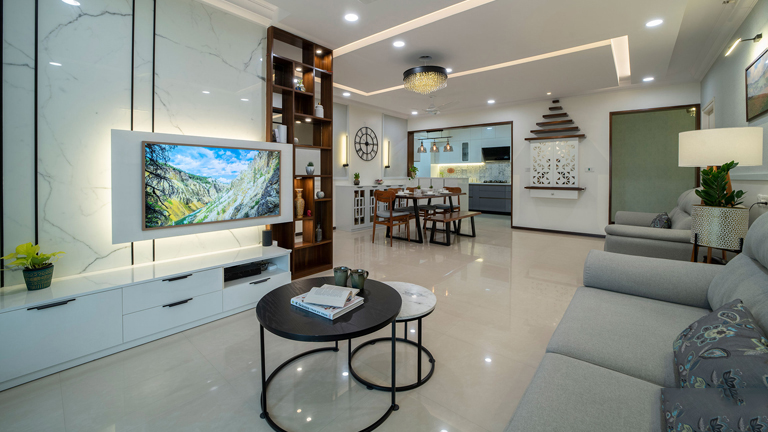
7. SMART SECURITY SYSTEMS
Smart home security systems are becoming highly popular. Most clients want to keep track of their home’s safety even remotely. Security cameras connected to apps allow homeowners to see who is at the door.
It allows them to control the opening and closing of the door and allow visitors or interact with delivery persons. Smart security systems also consist of alarm systems and motion detectors that can detect intruders, so clients have peace of mind over their property.

8. SMART HEATING & COOLING SYSTEMS
Temperature control and energy efficiency are a significant part of smart homes these days. Interior designers use smart heating and cooling systems to ensure that homeowners avoid racking up high energy bills. Gadgets, from smart thermostats to Google Home, can be installed into a home to help its overall energy costs go down significantly.
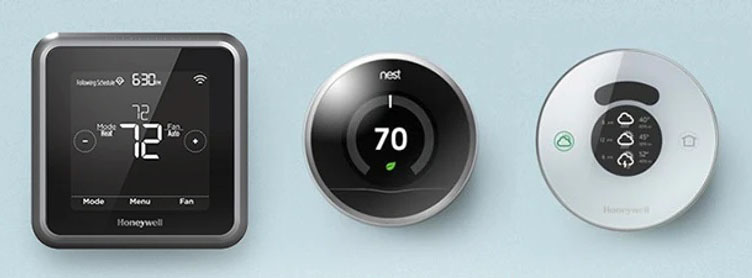
9. SMART SENSORS
Interior designers tend to install smart sensors in people’s homes. These include smoke sensors or heat sensors that can help save lives during accidents or emergencies. Smoke and heat sensors can send notifications to the phone and even get in touch with emergency services if and when they go off. Generally, smart motion sensors sense the presence of an individual and switch on when a person is around. These also help with identifying any intruders that may enter the house.
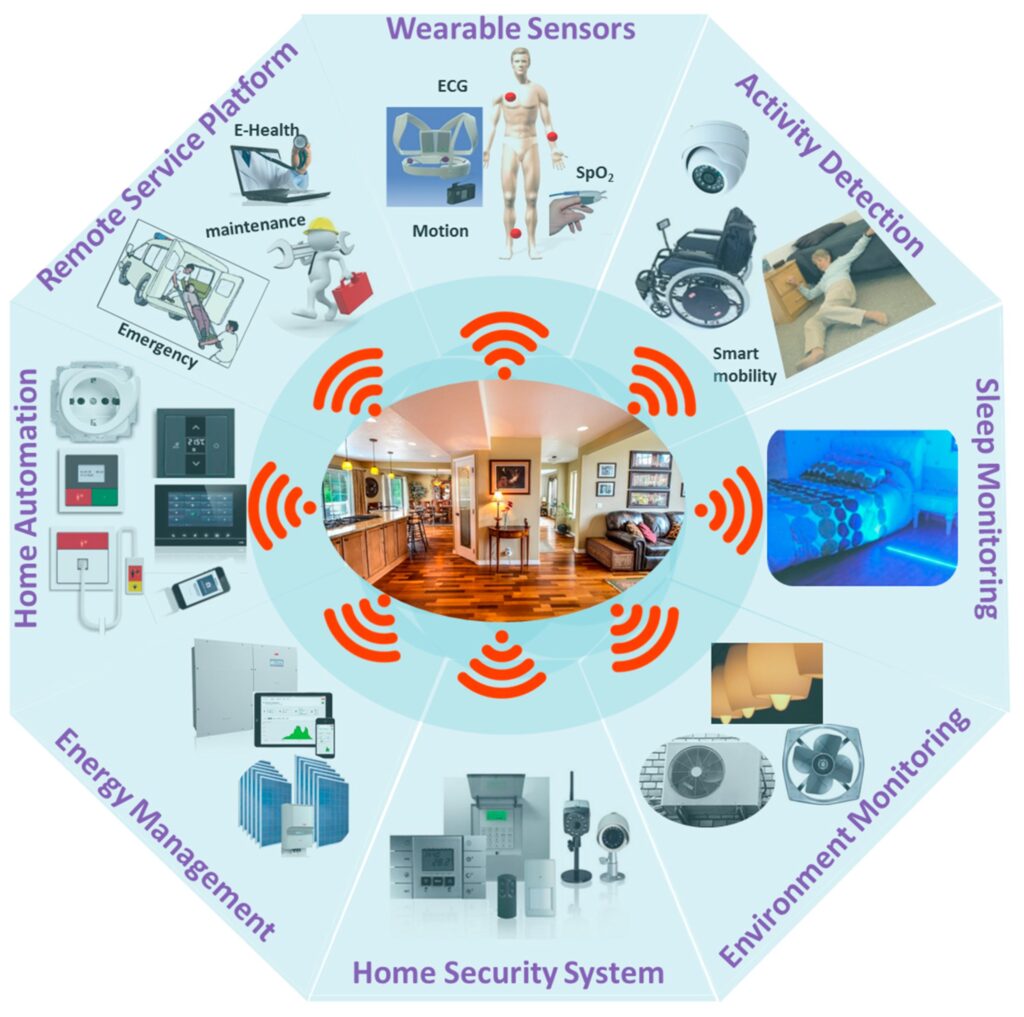
10. SMART PRIVACY
Everything in a home can be converted into a ‘smart’ object—including your curtains and blinds! In addition to offering smart lighting adjustment, interior designers also provide clients with the ability to fix the ambiance through curtain adjustment. With smart curtains, one can schedule when the curtains need to be drawn or open. Smart curtains also make homes feel safer with the ability to stimulate through the presence and draw themselves when no one is around.
They act as a barrier from heat and natural barriers. They also tend to keep the home cool and lower energy bills. Smart curtain technology also uses the app’s geolocation to understand when the homeowner is home and when they are away, to accordingly open or close.
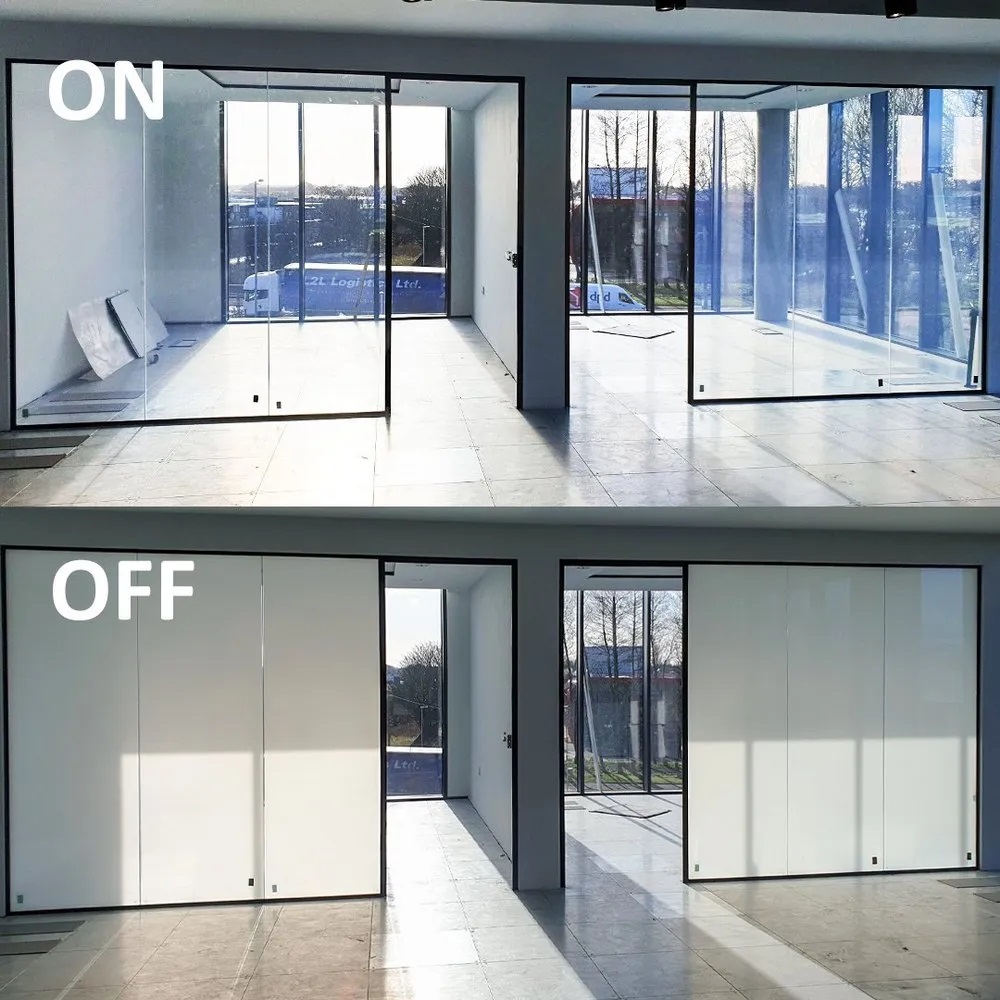
EXPERIENCE THE POWER OF TECHNOLOGY IN INTERIOR DESIGN
Smart homes are the future of automation in interior design. Interior designers need to learn how to use technology to their advantage in order to make a homework for the client. These days, homes can be customized to suit a person’s needs. For example, curtains can be drawn, lighting can be in accordance with a person’s mood and appliances can be turned on or off easily. Smart homes and home automation help make a person’s daily routine easier, so they spend less time on manual work and more time enjoying their home.
Interior design trends in the smart technology space have been coming up rapidly. As an interior designer, make sure you check out social media from time to time to get the latest information on smart technology, and how it can help you create smart homes.
If you’re an interior designer, learn how you can use tools to improve your knowledge about smart technology. Its is a one-stop-shop for all your design needs. The multifaceted design software has so many features to choose from that it makes it easier to visualize your design ideas more effectively.
- 60K + ready to use products
- Build Floor Plans, edit in 3D
- Drag and Drop Interface
- 4K Renders in minutes
